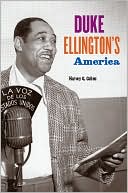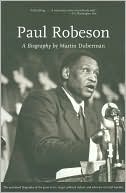Marian Anderson: A Singer's Journey
The only definitive biography of the legendary singer, "arguably the greatest contralto of this century" (The New York Times) and a seminal figure in the American civil rights movement, Marian Anderson is written with the full cooperation of her family and unprecedented access to her life. \ Born in Philadelphia in 1897, Marian Anderson revealed her prodigious talent at an early age. While still a child, she was singing for audiences in her hometown. Despite her astonishing musical gift,...
Search in google:
Born in 1897, Marian Anderson fell in love with music at an early age. Almost a century later, The New York Times would declare that "Miss Anderson's place as the high priestess of American musicians, whatever their color, is not to be denied." Yet success did not come easy for this talented singer. Although in 1938 she would become the first African-American singer to perform at the White House, just one year later, the Daughters of the American Revolution denied Anderson use of their concert hall (instead, she performed for a crowd of 75,000 at the Lincoln Memorial). But Anderson persevered, and her subsequent honors include a performance as the first AfricanAmerican soloist at the Metropolitan Opera, the Presidential Medal of Honor, and the Eleanor Roosevelt Human Rights Award. In the culmination of his lifelong fascination with Marian Anderson, Allan Keiler has superbly documented the life of this guarded, public figure-who is still enormously popular six years after her death (a collection of Anderson's works, Spirituals, recently reached number nine on the Tower Records classical music chart). Now correcting errors that appeared in Anderson's own highly selective memoir, My Lord, What a Morning, Keiler enhance both the history of American music and of the civil rights movement by uncovering the life of one of the century's greatest artists.Boston Globe - Richard DyerOne of the icons of America in the 20th century is the image of contralto Marian Anderson singing on the steps of the Lincoln Memorial in Washington, D.C., after she had been barred from singing in Constitution Hall because of her race. This event, in 1939, a milestone in the nation's civil rights struggle, lifted Anderson to a symbolic status that she had never sought and that she felt uncomfortable with - though she bore her symbolic status with dignity right to the end of her singing career, 26 years later, and indeed to her death in 1993, at the age of 96. The great value of Allan Keiler's new biography of Anderson is that it aims to place the focus where Anderson always wanted it to be, on her musical accomplishments. In nearly every photo in Keiler's section of illustrations, Anderson looks stiff, uncomfortable, and posed - except in an outstanding image from a recital in Goshen, Ind., an image that catches her as she sang; music was her natural element. Keiler, a professor of music at Brandeis University, wrote with the cooperation of Anderson's nephew, the conductor James DePreist, and met with Anderson herself on two occasions in the months before her death. In a fascinating appendix Keiler summarizes her repertory, which was far larger than even her substantial recorded legacy might indicate. What she sang is amazing - and so is what she didn't. She never had the opportunity to sing the Bach Passions or the Verdi Requiem, and she sang Mendelssohn's ''Elijah'' only once (here in Boston, with Roland Hayes as Obediah and Henry T. Burleigh as the prophet). Keiler's emphasis on Anderson's artistic accomplishments does not lead him to stint on re-creating the controversy and drama of her life - her struggle to gain a musical education against all the odds, and to establish herself before the world musical public; her prolonged efforts to master the German language and the international song literature; her marriage to the architect Orpheus Fisher; her initial failure in New York; her successes in Europe, particularly Scandinavia; her triumphant return to America; the Lincoln Memorial Concert; her debut at the Metropolitan Opera, the first appearance of an African-American singer there; her goodwill trip to Asia, documented by Edward R. Murrow on television; her farewell tour; her public and private life after the close of her career. All these are part of the Anderson myth, familiar from countless retellings, including her own ghost-written autobiography, ''My Lord, What a Morning.'' What Keiler's carefully researched accounts add is light, shade, depth, perspective, context. He also marshals a number of facts that were never public knowledge. Only at the time of Anderson's death was it revealed that she had shaved 5 years off her age throughout her career; Keiler accounts for the missing years when Anderson had to drop out of school to help support her family. Kosti Vehanen, Anderson's collaborative pianist from 1930-40, returned to Finland after a sexual indiscretion, so Franz Rupp became Anderson's accompanist for the next quarter-century. Keiler doesn't make a point of it, but it is nice to learn that Anderson stayed in touch with Vehanen and visited him every time her trips took her to Scandinavia. Some facts prove elusive. Keiler's account of the Lincoln Memorial concert occupies an entire chapter, but he doesn't answer a question this reader has always wondered about. Eleanor Roosevelt contributed to the fame of this event by resigning from the Daughters of the American Revolution, which owned Constitution Hall. It's very clear that race was the reason; dates ''unavailable'' to Anderson proved to be open to the Polish pianist Paderewski. But the DAR has always argued that the hall was unavailable on that particular Easter Sunday because of a commitment to the National Symphony. Was there such a commitment, and did the National Symphony concert actually take place? Keiler writes straightforwardly and sometimes eloquently, but he has not been copy-edited with sufficient care: The names of Rudolf Bing, who took credit for bringing Anderson to the Met, and of Max Rudolf, the conductor who actually made it happen, are consistently misspelled. Keiler ''reads'' the newsreels of the Lincoln Memorial concert with sensitivity. ''Those moments of hushed expectancy before Anderson began to sing are there on film, moments in which Anderson seems so vulnerable and alone, so nearly terrified of the awesomeness of the occasion, that those around her must have wondered if she would be able to sing at all. The music transforms her almost immediately. With her eyes closed and her head raised proudly, a look of determination takes over. But only rarely does Keiler let himself listen to Anderson's recordings with comparable attention, and those recordings are what bear the strongest continuing witness to her greatness. (In the liner notes to some recent CDs, he writes with more insight into her singing than he does here.) The result is a damaging lacuna in a book that sets out to concentrate on Anderson the artist: This is a very good book about a great woman and a great musician, but there isn't much music in it.
1. Childhood in South Philadelphia (1897-1915)2. The Struggle for Education (1915-1921)3. Touring with Billy King (1921-1928)4. London (1928)5. The Judson Years (1929-1930)6. Berlin and Scandinavia (1930-1931)7. "Marian Fever" (1932-1934)8. Fame in Europe (1934-1935)9. A Hurok Artist (1935-1939)10. The Concert at the Lincoln Memorial (Easter Sunday, 1939)11. Marriage and Career (1939-1943)12. Postwar Years (1943-1952)13. On the World Stage (1952-1958)14. Retirement (1959-1993)Appendix I RepertoryAppendix II DiscographyReferencesBibliographyNotesIndex
\ From Barnes & NobleSong of Sorrow, Song of Hope \ Marian Anderson (1897-1993), widely considered the greatest contralto of the 20th century, was also a central, early figure in the civil rights movement. Keiler's thorough (and thoroughly engaging) biography—authorized by the Anderson family—presents a complete picture of an amazing artist, giving equal voice to her stunning musicianship and commitment to uplifting her race.\ \ \ \ \ \ \ Richard DyerOne of the icons of America in the 20th century is the image of contralto Marian Anderson singing on the steps of the Lincoln Memorial in Washington, D.C., after she had been barred from singing in Constitution Hall because of her race. \ This event, in 1939, a milestone in the nation's civil rights struggle, lifted Anderson to a symbolic status that she had never sought and that she felt uncomfortable with - though she bore her symbolic status with dignity right to the end of her singing career, 26 years later, and indeed to her death in 1993, at the age of 96.\ The great value of Allan Keiler's new biography of Anderson is that it aims to place the focus where Anderson always wanted it to be, on her musical accomplishments. In nearly every photo in Keiler's section of illustrations, Anderson looks stiff, uncomfortable, and posed - except in an outstanding image from a recital in Goshen, Ind., an image that catches her as she sang; music was her natural element.\ Keiler, a professor of music at Brandeis University, wrote with the cooperation of Anderson's nephew, the conductor James DePreist, and met with Anderson herself on two occasions in the months before her death.\ In a fascinating appendix Keiler summarizes her repertory, which was far larger than even her substantial recorded legacy might indicate. What she sang is amazing - and so is what she didn't. She never had the opportunity to sing the Bach Passions or the Verdi Requiem, and she sang Mendelssohn's ''Elijah'' only once (here in Boston, with Roland Hayes as Obediah and Henry T. Burleigh as the prophet).\ Keiler's emphasis on Anderson's artistic accomplishments does not lead him to stint on re-creating the controversy and drama of her life - her struggle to gain a musical education against all the odds, and to establish herself before the world musical public; her prolonged efforts to master the German language and the international song literature; her marriage to the architect Orpheus Fisher; her initial failure in New York; her successes in Europe, particularly Scandinavia; her triumphant return to America; the Lincoln Memorial Concert; her debut at the Metropolitan Opera, the first appearance of an African-American singer there; her goodwill trip to Asia, documented by Edward R. Murrow on television; her farewell tour; her public and private life after the close of her career. All these are part of the Anderson myth, familiar from countless retellings, including her own ghost-written autobiography, ''My Lord, What a Morning.'' What Keiler's carefully researched accounts add is light, shade, depth, perspective, context.\ He also marshals a number of facts that were never public knowledge. Only at the time of Anderson's death was it revealed that she had shaved 5 years off her age throughout her career; Keiler accounts for the missing years when Anderson had to drop out of school to help support her family. Kosti Vehanen, Anderson's collaborative pianist from 1930-40, returned to Finland after a sexual indiscretion, so Franz Rupp became Anderson's accompanist for the next quarter-century. Keiler doesn't make a point of it, but it is nice to learn that Anderson stayed in touch with Vehanen and visited him every time her trips took her to Scandinavia.\ Some facts prove elusive. Keiler's account of the Lincoln Memorial concert occupies an entire chapter, but he doesn't answer a question this reader has always wondered about. Eleanor Roosevelt contributed to the fame of this event by resigning from the Daughters of the American Revolution, which owned Constitution Hall. It's very clear that race was the reason; dates ''unavailable'' to Anderson proved to be open to the Polish pianist Paderewski. But the DAR has always argued that the hall was unavailable on that particular Easter Sunday because of a commitment to the National Symphony. Was there such a commitment, and did the National Symphony concert actually take place?\ Keiler writes straightforwardly and sometimes eloquently, but he has not been copy-edited with sufficient care: The names of Rudolf Bing, who took credit for bringing Anderson to the Met, and of Max Rudolf, the conductor who actually made it happen, are consistently misspelled. Keiler ''reads'' the newsreels of the Lincoln Memorial concert with sensitivity. ''Those moments of hushed expectancy before Anderson began to sing are there on film, moments in which Anderson seems so vulnerable and alone, so nearly terrified of the awesomeness of the occasion, that those around her must have wondered if she would be able to sing at all.\ The music transforms her almost immediately. With her eyes closed and her head raised proudly, a look of determination takes over. But only rarely does Keiler let himself listen to Anderson's recordings with comparable attention, and those recordings are what bear the strongest continuing witness to her greatness. (In the liner notes to some recent CDs, he writes with more insight into her singing than he does here.) The result is a damaging lacuna in a book that sets out to concentrate on Anderson the artist: This is a very good book about a great woman and a great musician, but there isn't much music in it.\ — Boston Globe\ \ \ \ Publishers WeeklyDrawing on newspaper articles, interviews with the singer and her family, personal papers and letters, and Anderson's 1956 autobiography (My Lord, What a Morning), Keiler, a professor of music at Brandeis, traces the extraordinary life of a gifted singer who became a national symbol. He writes of the racism Anderson encountered as an African-American in the 1920s, '30s and '40s, from the voice teachers in Philadelphia who refused to teach her to the Daughters of the American Revolution's now-legendary decision to bar her from singing at Constitution Hall. Amid such events, however, Keiler concentrates mainly on Anderson's musicianship and career, presenting a convincing picture of a singer who was more troubled by questions of interpretation in German lieder than by the segregation of concert facilities in the South. Keiler's analysis of Anderson's musical training, repertoire, choices of accompanists and publicists, touring schedules and other professional difficulties will be of interest to readers with musical backgrounds. His clear, succinct prose, initially lacking narrative coherence, gains strength and momentum as his subject matures from a young and struggling artist into one of the enduring voices of our century. (Feb.) Copyright 2000 Cahners Business Information.\ \ \ \ \ Anthony HeilbutKeiler's impressively researched book supplements and supersedes Anderson's 1956 autobiography...by putting his emphasis on her career, Keiler gives Marian Anderson the homage she deserves. It is a quietly amazing story. \ —The New York Times Book Review\ \ \ \ \ Allan Keiler[A] serious, engaging bio of the pioneering diva.\ —People Magazine\ \








